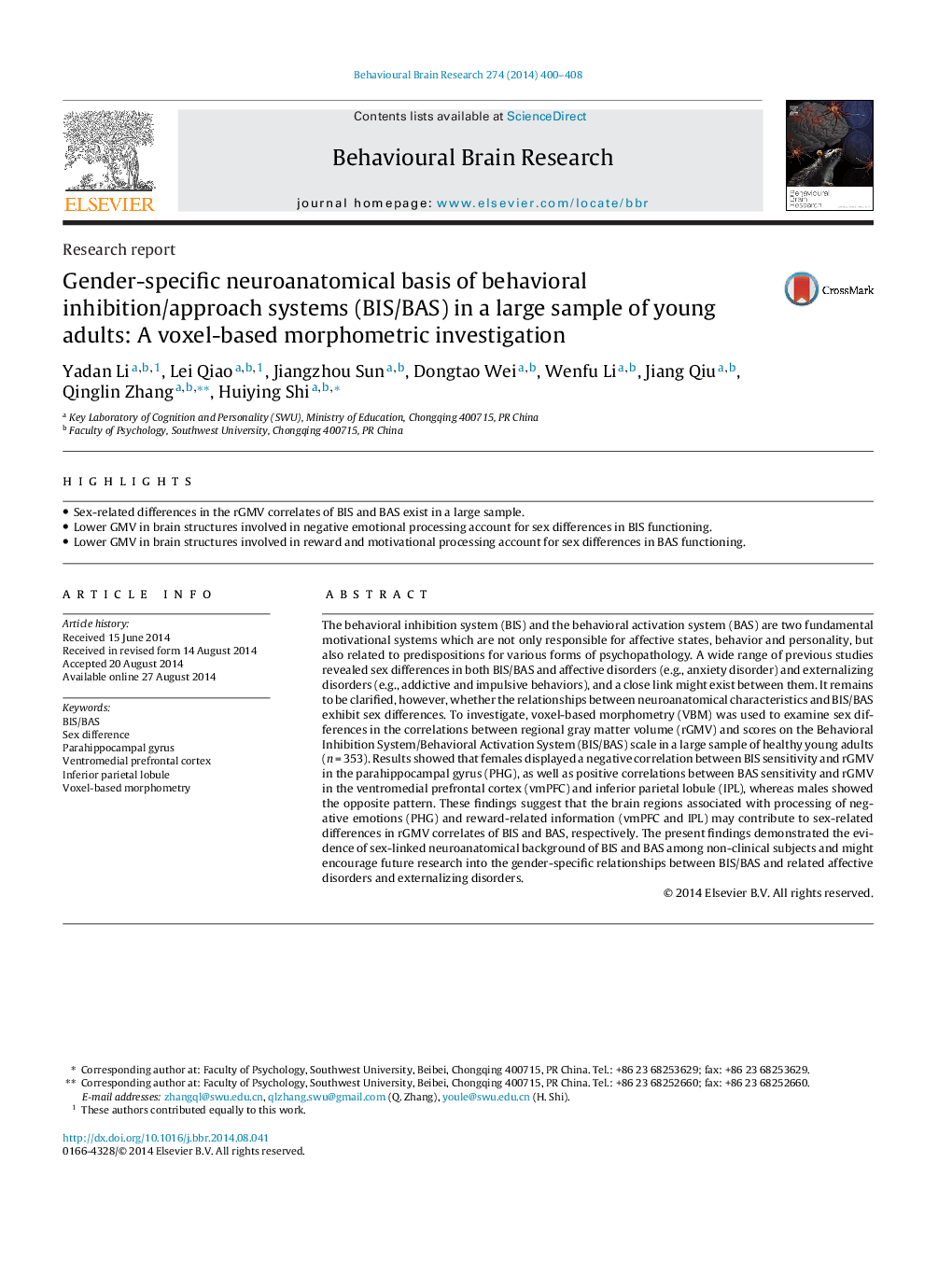| Article ID | Journal | Published Year | Pages | File Type |
|---|---|---|---|---|
| 6257787 | Behavioural Brain Research | 2014 | 9 Pages |
â¢Sex-related differences in the rGMV correlates of BIS and BAS exist in a large sample.â¢Lower GMV in brain structures involved in negative emotional processing account for sex differences in BIS functioning.â¢Lower GMV in brain structures involved in reward and motivational processing account for sex differences in BAS functioning.
The behavioral inhibition system (BIS) and the behavioral activation system (BAS) are two fundamental motivational systems which are not only responsible for affective states, behavior and personality, but also related to predispositions for various forms of psychopathology. A wide range of previous studies revealed sex differences in both BIS/BAS and affective disorders (e.g., anxiety disorder) and externalizing disorders (e.g., addictive and impulsive behaviors), and a close link might exist between them. It remains to be clarified, however, whether the relationships between neuroanatomical characteristics and BIS/BAS exhibit sex differences. To investigate, voxel-based morphometry (VBM) was used to examine sex differences in the correlations between regional gray matter volume (rGMV) and scores on the Behavioral Inhibition System/Behavioral Activation System (BIS/BAS) scale in a large sample of healthy young adults (n = 353). Results showed that females displayed a negative correlation between BIS sensitivity and rGMV in the parahippocampal gyrus (PHG), as well as positive correlations between BAS sensitivity and rGMV in the ventromedial prefrontal cortex (vmPFC) and inferior parietal lobule (IPL), whereas males showed the opposite pattern. These findings suggest that the brain regions associated with processing of negative emotions (PHG) and reward-related information (vmPFC and IPL) may contribute to sex-related differences in rGMV correlates of BIS and BAS, respectively. The present findings demonstrated the evidence of sex-linked neuroanatomical background of BIS and BAS among non-clinical subjects and might encourage future research into the gender-specific relationships between BIS/BAS and related affective disorders and externalizing disorders.
